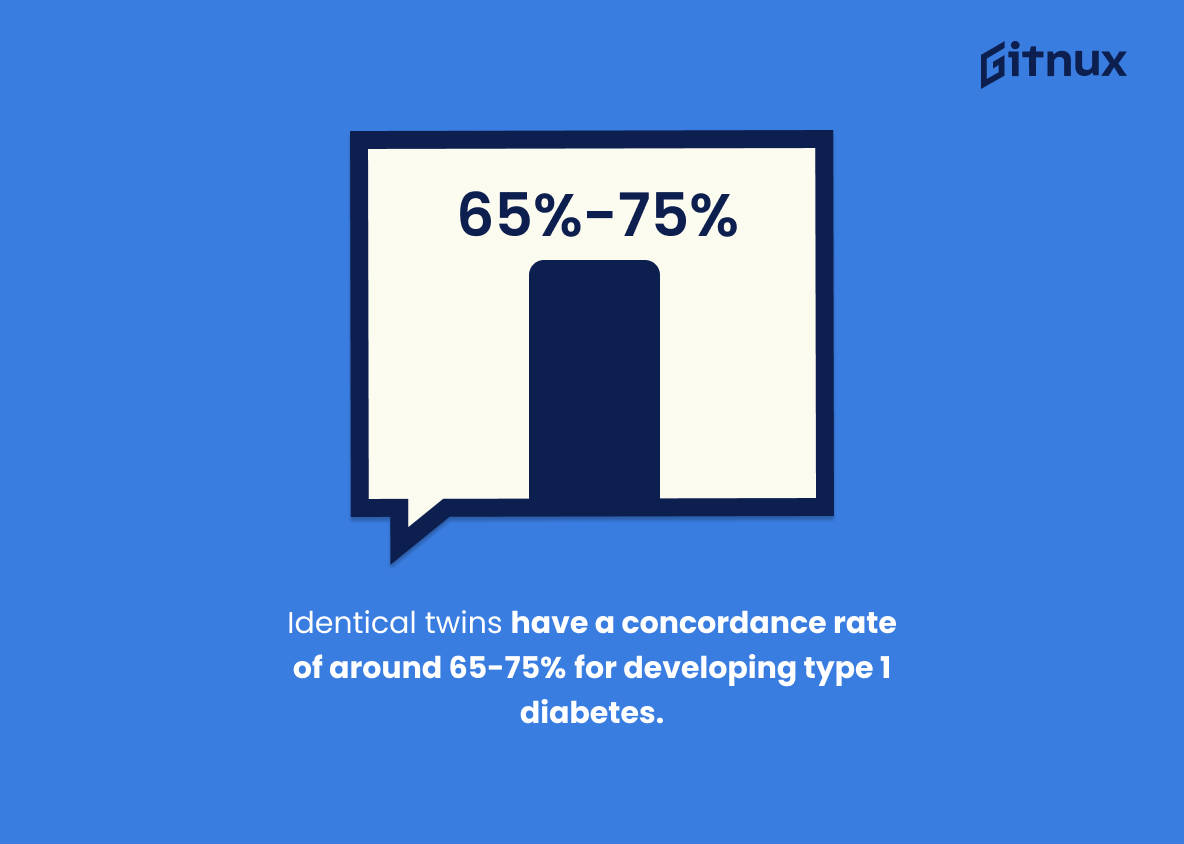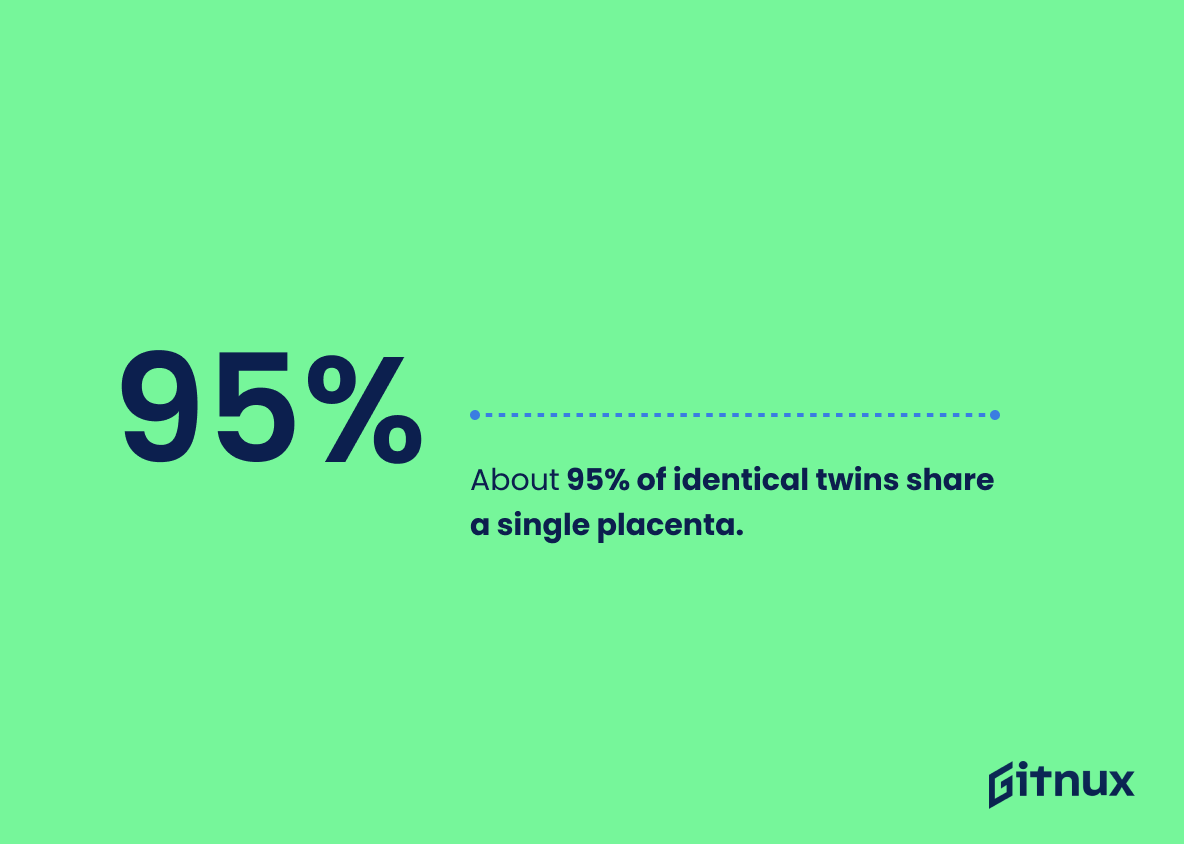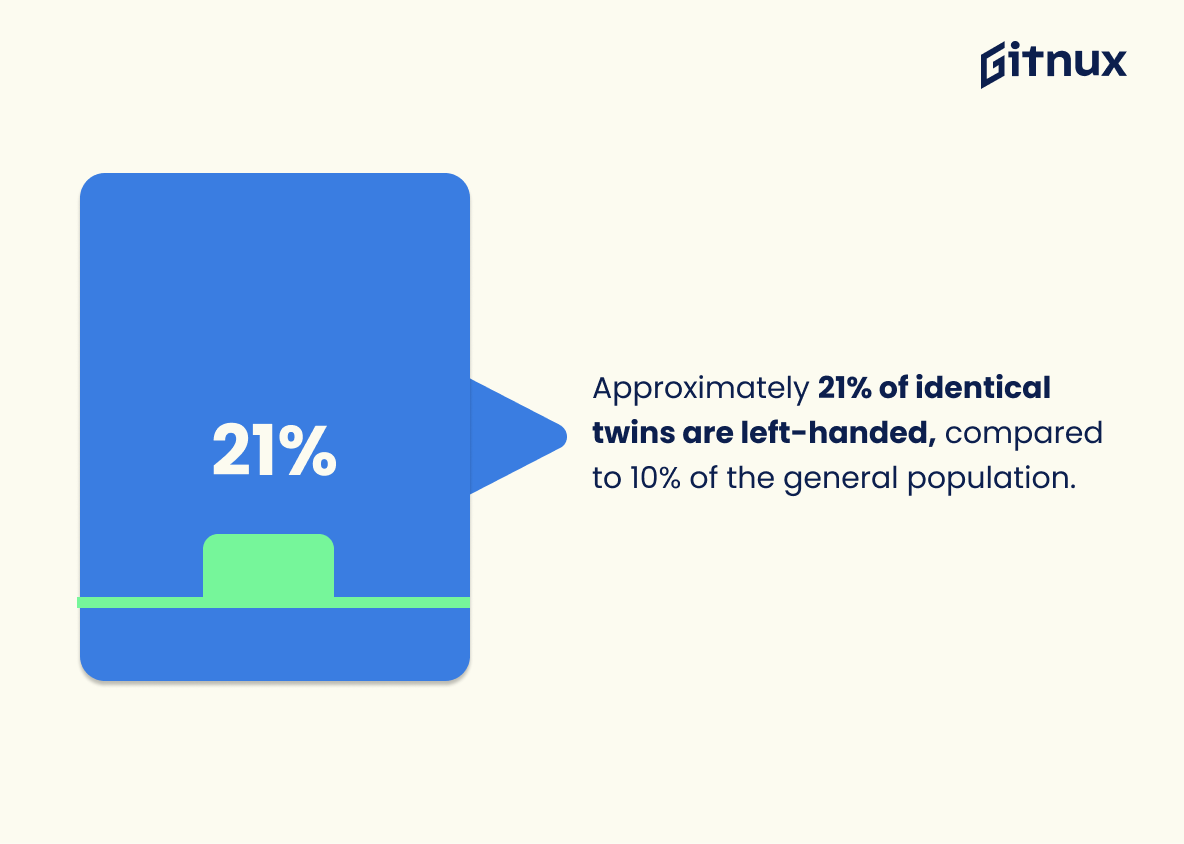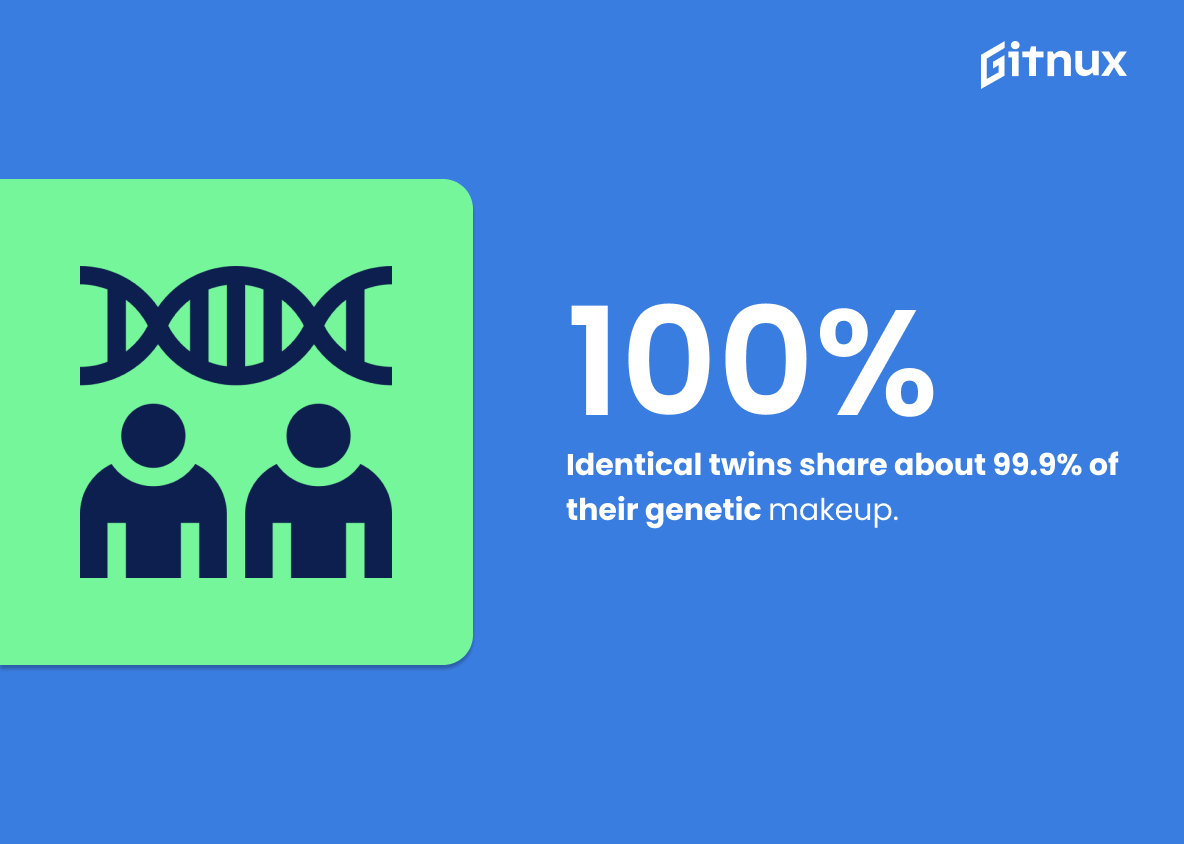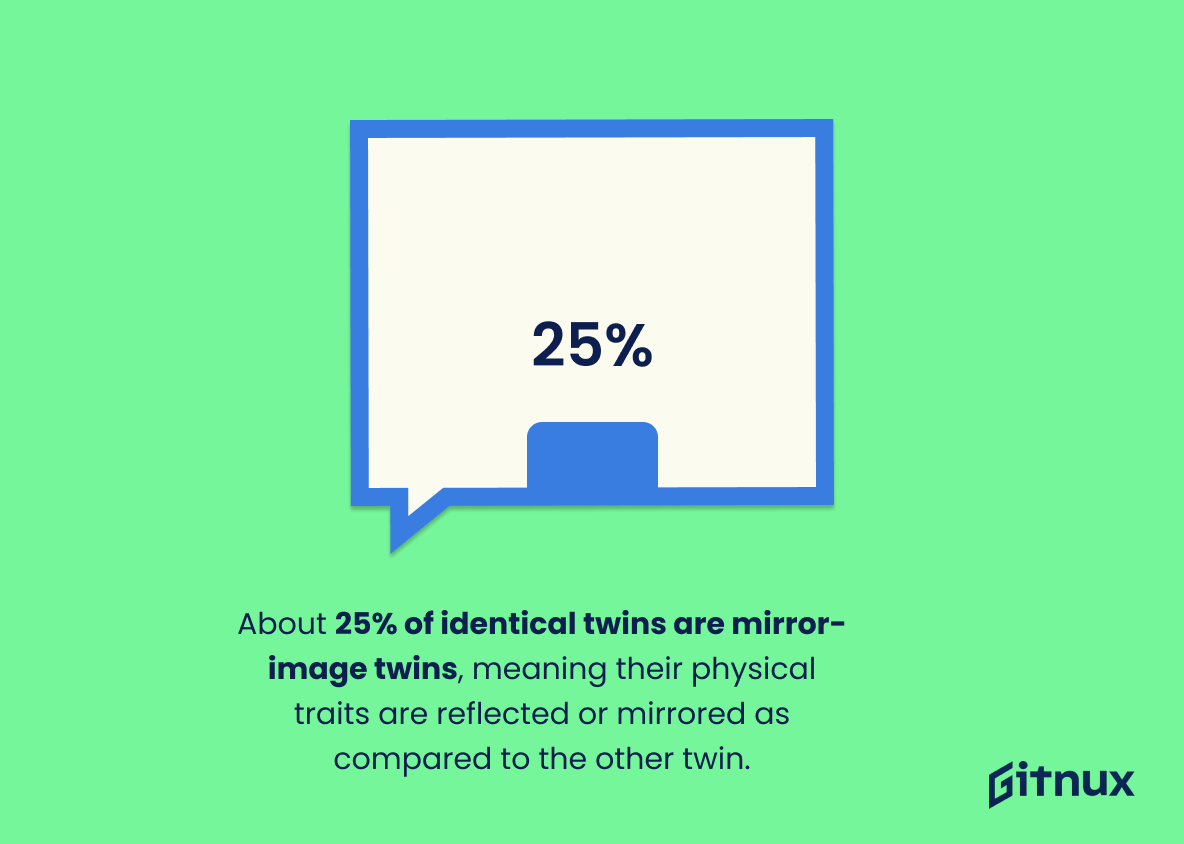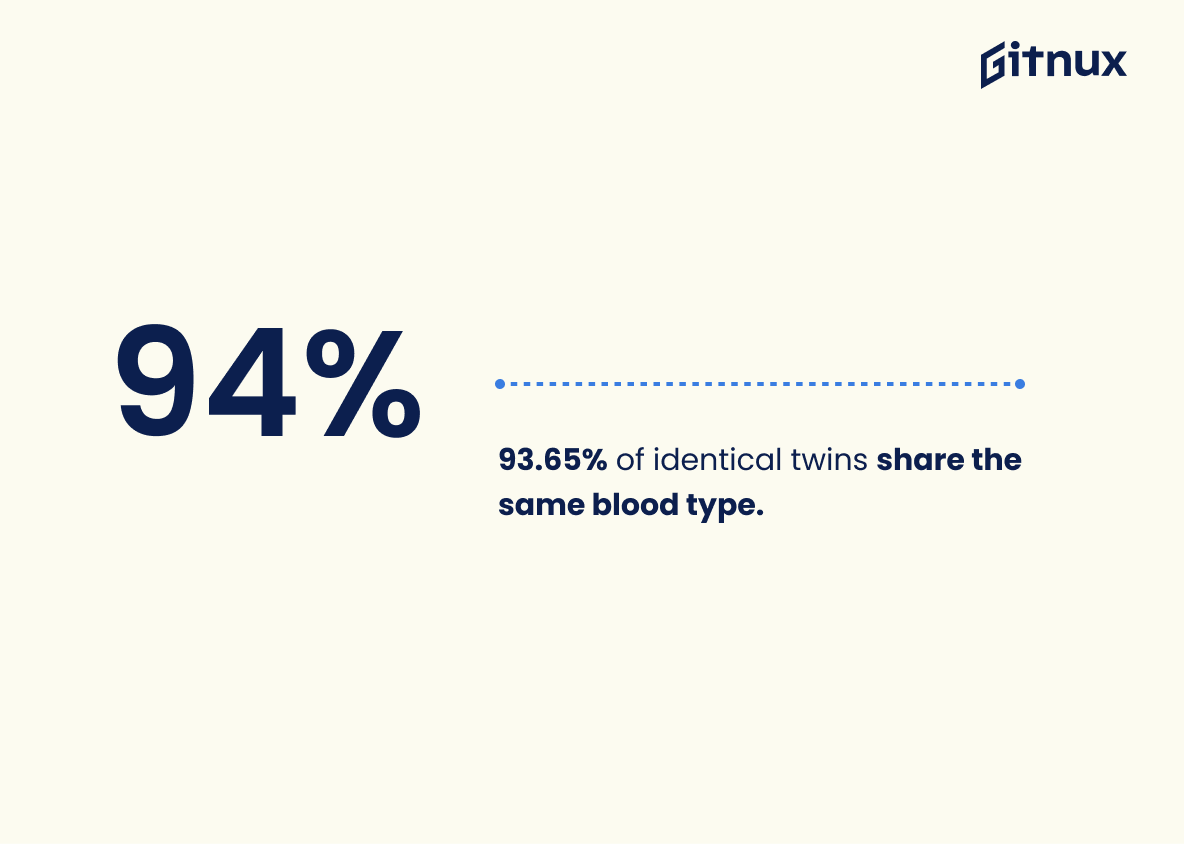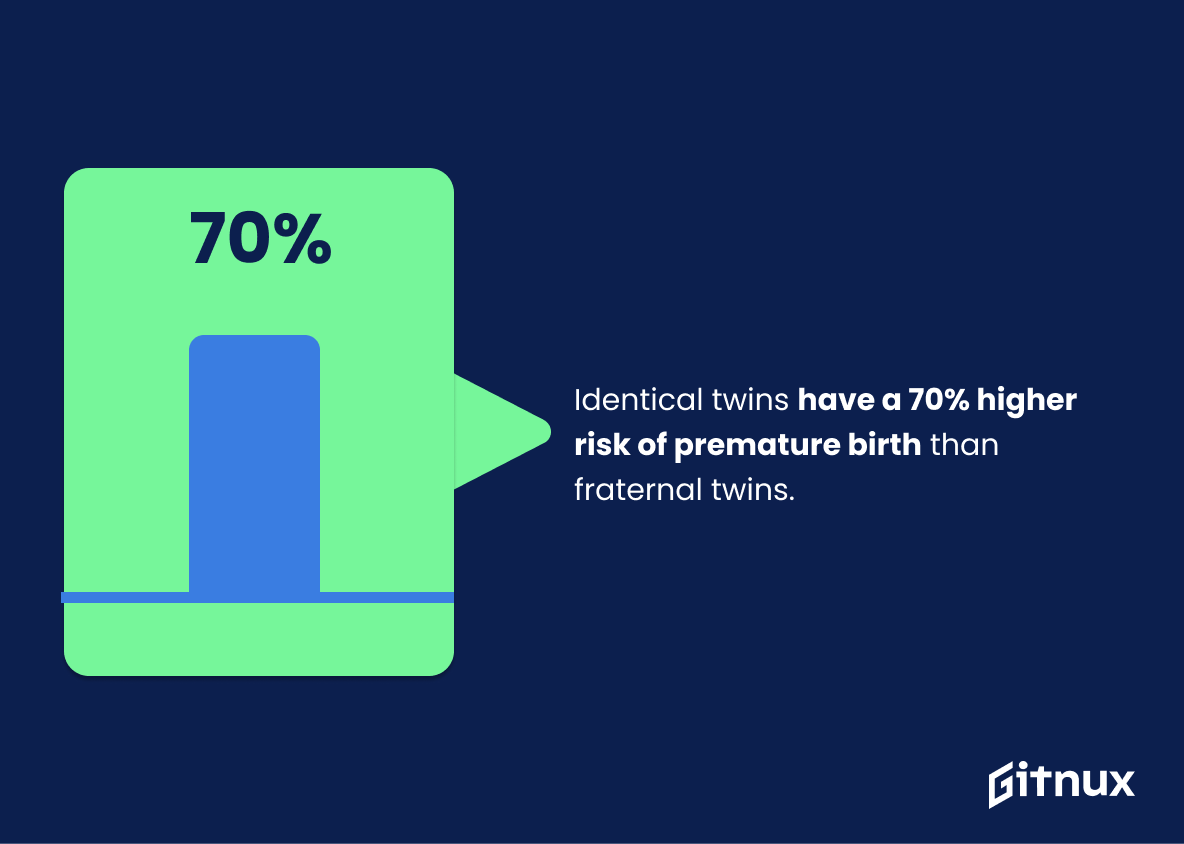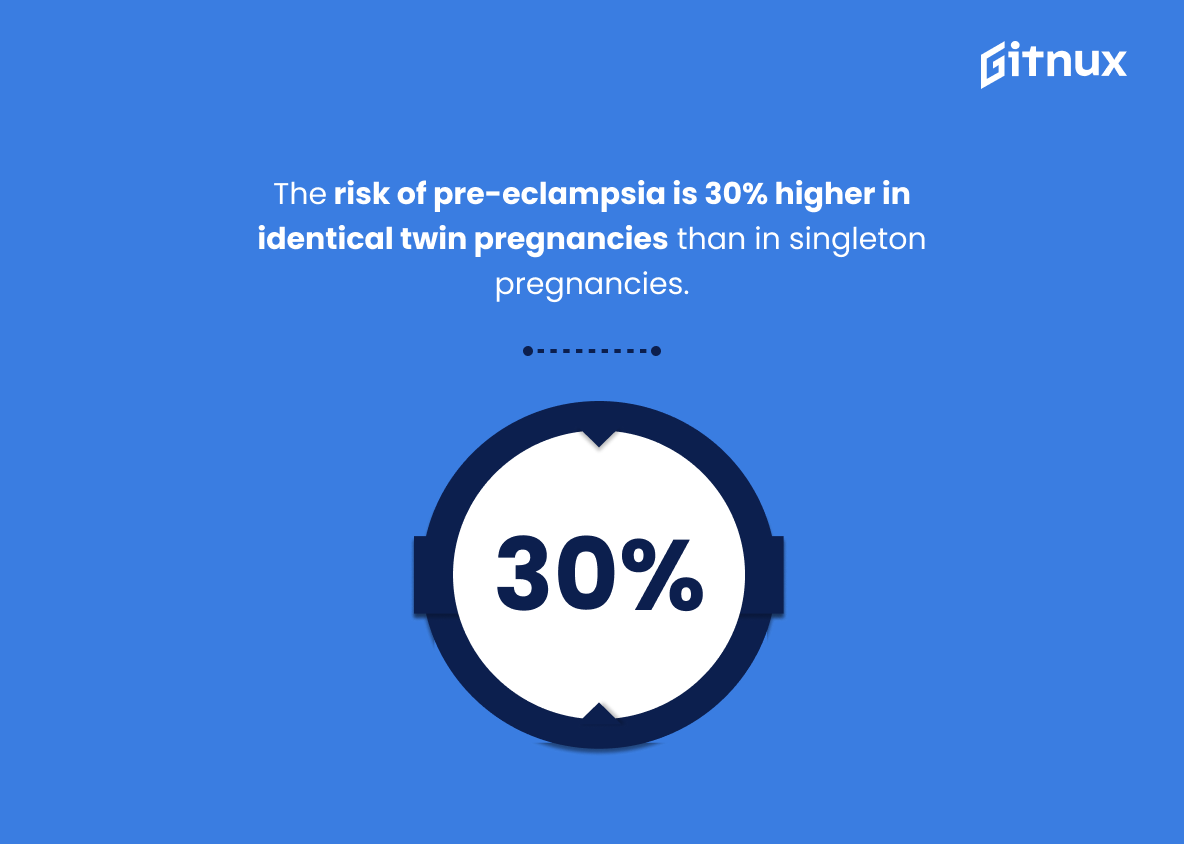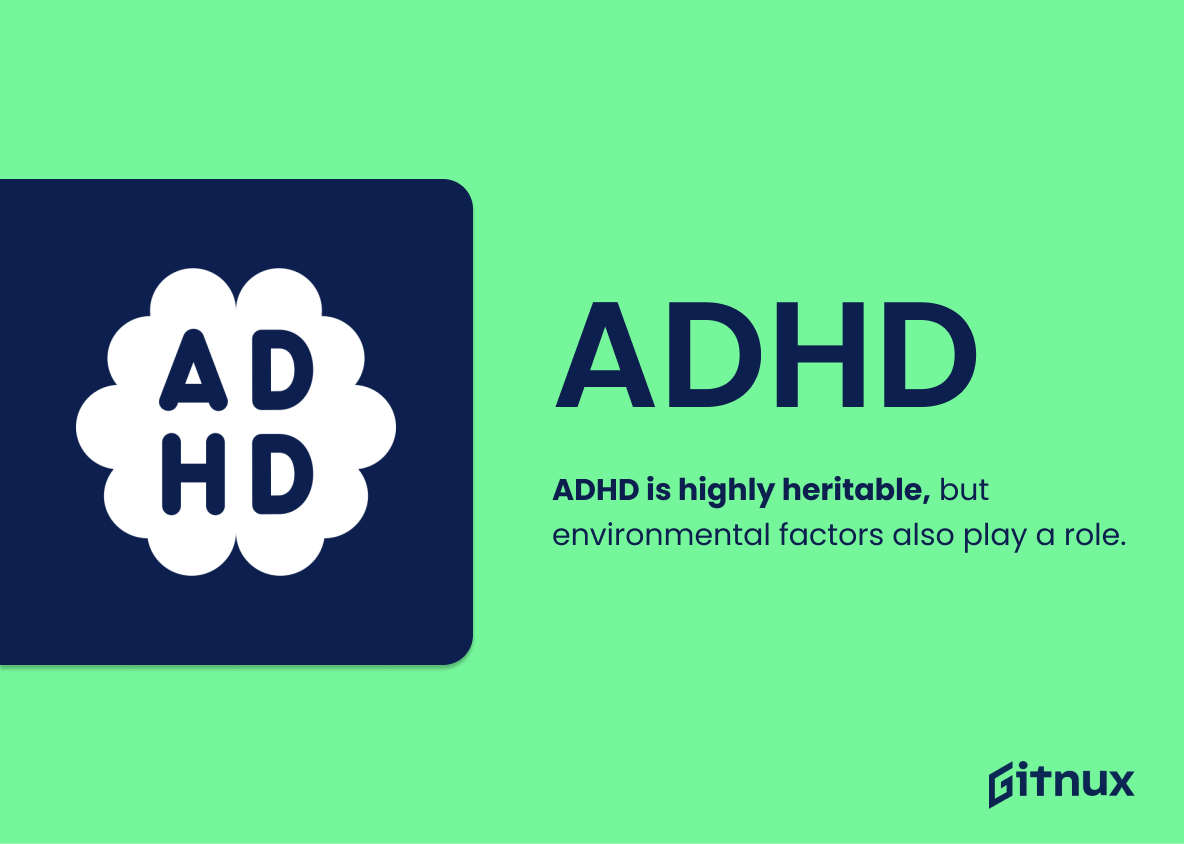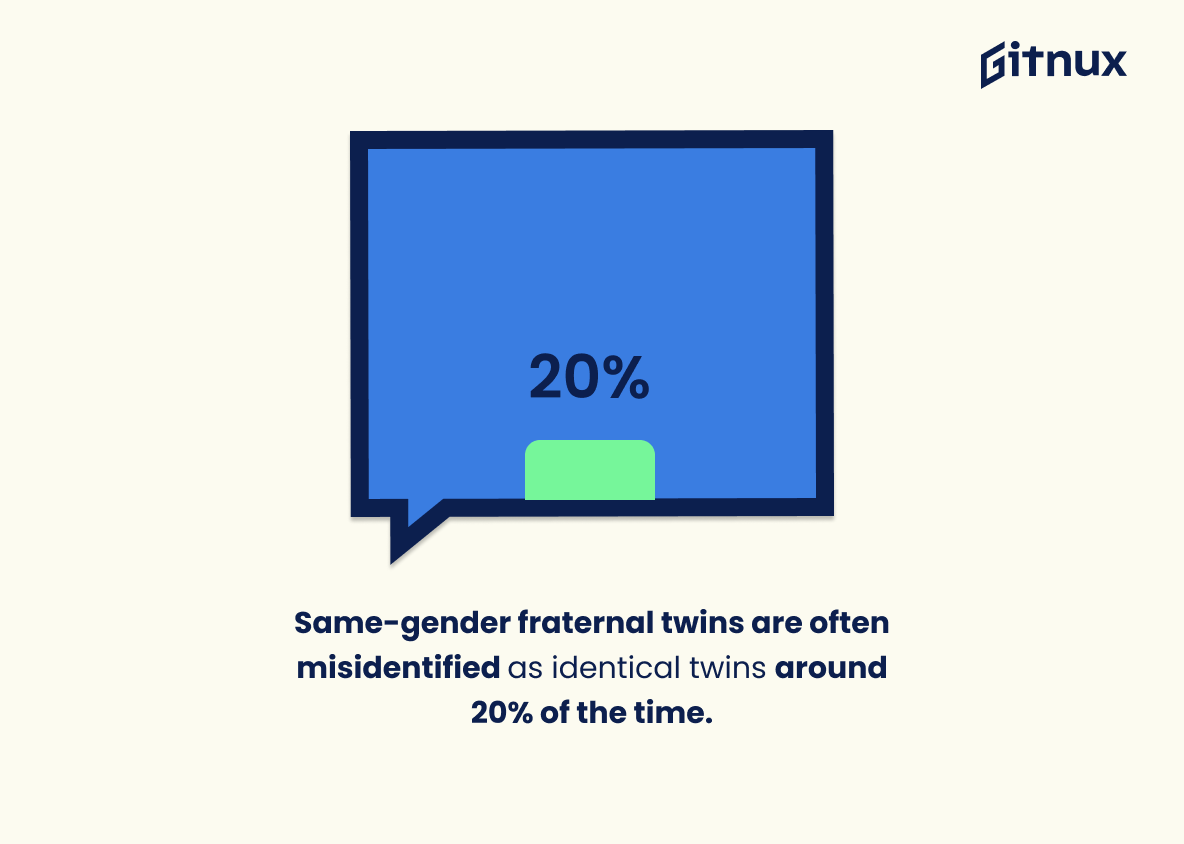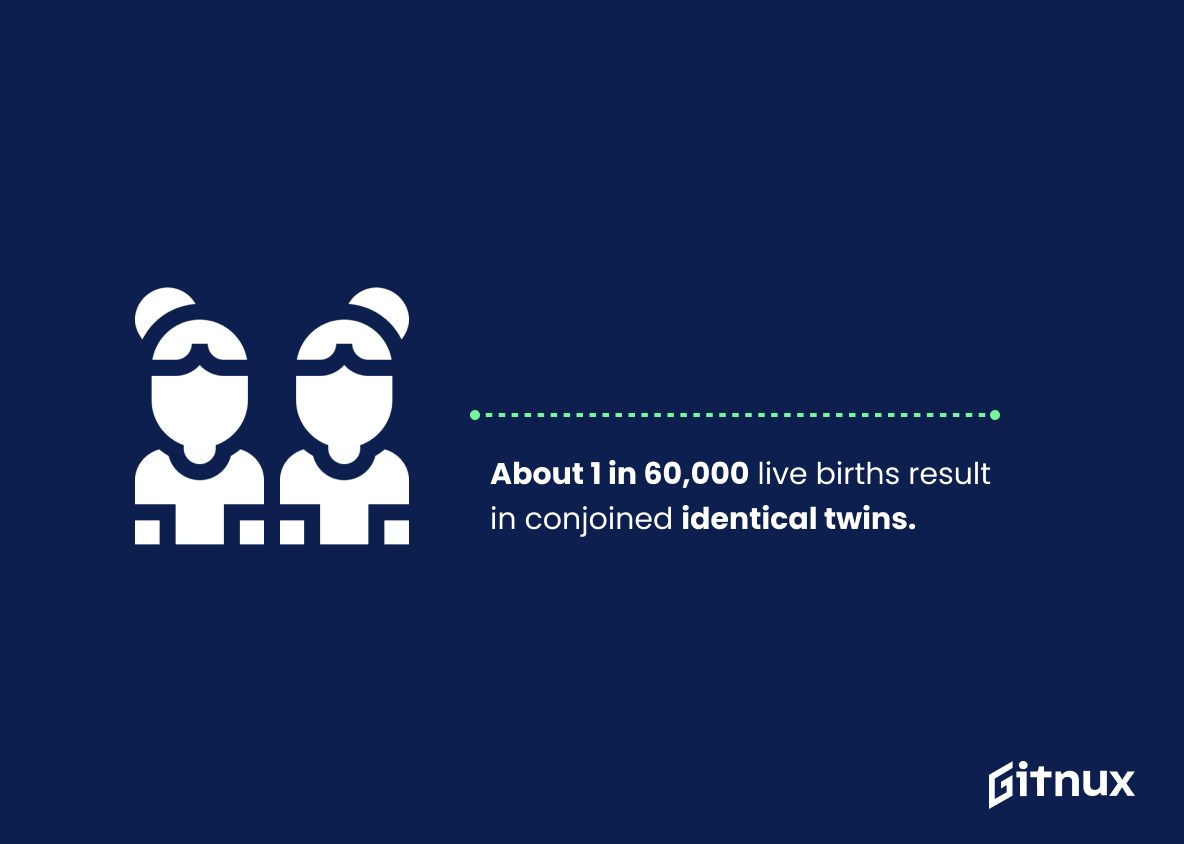Identical twins are a fascinating phenomenon, and there is much to learn about them. From the odds of having identical twins in natural pregnancies to their concordance rate for developing certain diseases, statistics can provide us with valuable insight into this unique type of twinning. In this blog post, we will explore 20 different facts and figures related to identical twins that have been gathered from various sources. We’ll look at everything from the risk of congenital anomalies in these types of pregnancies to the heritability rates for conditions like autism spectrum disorder and attention deficit hyperactivity disorder (ADHD). So let’s dive right in.
Identical Twins Statistics Overview
The risk of congenital anomalies in identical twins is 2 to 4 times higher than in singletons.
This statistic is a stark reminder of the increased risk of congenital anomalies that identical twins face compared to singletons. It serves as a warning to parents of identical twins to be extra vigilant in monitoring their children’s health and development. It also highlights the importance of seeking medical advice and support if any anomalies are suspected.
Identical twins have a concordance rate of around 65-75% for developing type 1 diabetes.
This statistic is a powerful reminder of the strong influence genetics can have on our health. It highlights the fact that identical twins have a much higher chance of developing type 1 diabetes than the general population, indicating that genetics play a major role in the development of this condition. This is an important statistic to consider when discussing the health of identical twins, as it can help inform decisions about preventative measures and treatments.
About 95% of identical twins share a single placenta.
This statistic is a powerful reminder of the unique bond between identical twins, as it demonstrates the physical connection they share even before birth. It is a testament to the special relationship between identical twins, and serves as a reminder of the incredible bond they share.
Approximately 21% of identical twins are left-handed, compared to 10% of the general population.
This statistic is a telling indication of the unique nature of identical twins. It suggests that there is something special about the genetic makeup of identical twins that makes them more likely to be left-handed than the general population. This could be a clue to further research into the genetic differences between identical twins and the general population.
The heritability of alcohol dependence is around 40-60% in identical twins.
This statistic is a powerful reminder of the significant role genetics play in alcohol dependence. It highlights the fact that identical twins, who share the same genetic makeup, are more likely to both suffer from alcohol dependence than non-identical twins, who only share half of their genetic makeup. This statistic serves as a reminder that genetics can have a profound influence on our lives, and that it is important to be aware of the potential risks associated with alcohol dependence.
Identical twins share about 99.9% of their genetic makeup.
This statistic is a powerful reminder of the incredible bond between identical twins, as it demonstrates just how closely related they are on a genetic level. It highlights the fact that identical twins are more than just siblings, but rather two individuals who share an incredibly strong connection. This statistic is a testament to the unique relationship between identical twins, and serves as a reminder of the special bond they share.
About 25% of identical twins are mirror-image twins, meaning their physical traits are reflected or mirrored as compared to the other twin.
This statistic is an important insight into the unique nature of identical twins, as it highlights the fact that even though they are genetically identical, they can still have distinct physical features. This can be a fascinating topic for readers to explore, as it shows that even though identical twins may look the same, they can still have subtle differences that make them unique.
93.65% of identical twins share the same blood type.
This statistic is a powerful testament to the incredible bond between identical twins. It speaks to the fact that, even on a cellular level, these siblings are incredibly similar. This statistic is a reminder of the unique connection that identical twins share, and it serves as a reminder of the strength of the bond between them.
Identical twins have a 70% higher risk of premature birth than fraternal twins.
This statistic is a powerful reminder of the importance of understanding the unique risks associated with identical twins. It highlights the need for expecting parents of identical twins to be aware of the potential for premature birth and to take extra precautions to ensure the health and safety of their babies.
The risk of pre-eclampsia is 30% higher in identical twin pregnancies than in singleton pregnancies.
This statistic is a powerful reminder of the increased risk of pre-eclampsia that identical twin pregnancies carry. It serves as a warning to expectant mothers of multiples to be extra vigilant in monitoring their health and to seek medical advice if any signs of pre-eclampsia arise. Knowing this statistic can help to ensure that mothers of identical twins are well-informed and prepared for the potential risks associated with their pregnancies.
The heritability of attention deficit hyperactivity disorder (ADHD) in identical twins ranges between 70-85%.
This statistic is a powerful indicator of the genetic influence of ADHD, as it demonstrates that identical twins have a much higher likelihood of both having the disorder than non-identical twins. This suggests that ADHD is largely determined by genetic factors, and that environmental factors play a much smaller role in its development. This is an important point to consider when discussing identical twins statistics, as it highlights the importance of genetics in the development of certain conditions.
Same-gender fraternal twins are often misidentified as identical twins around 20% of the time.
This statistic is a crucial reminder that even though same-gender fraternal twins may look similar, they are not identical. It is important to recognize this distinction when discussing identical twins statistics, as it can help to provide a more accurate picture of the prevalence of identical twins in the population.
About 1 in 60,000 live births result in conjoined identical twins.
This statistic is a powerful reminder of the rarity of conjoined identical twins, highlighting the uniqueness of this phenomenon. It serves as a reminder of the extraordinary circumstances that must come together for conjoined identical twins to be born, and the importance of understanding and appreciating the complexity of this occurrence.
Conclusion
Identical twins are a fascinating phenomenon, and the statistics surrounding them can be quite surprising. From 1 in 250 natural pregnancies resulting in identical twins to around 21% of them being left-handed compared to 10% of the general population, there is much to learn about this unique type of twinning. Identical twins share 99.9% of their genetic makeup and have higher risks for certain conditions such as congenital anomalies, type 1 diabetes, pre-eclampsia and major depressive disorder than singletons or fraternal twins do. They also have an increased risk for premature birth when compared with fraternal twins but a lower risk than singleton births when it comes to conjoined twinning. Finally, same gender fraternal pairs are often misidentified as identicals up to 20 percent of the time due to their similar physical traits. All these facts demonstrate just how special identical twinning truly is.
References
0. – https://www.independent.co.uk
1. – https://www.rehabs.com
2. – https://www.embryology.med.unsw.edu.au
3. – https://www.twins.org.au
4. – https://www.verywellfamily.com
5. – https://www.pubmed.ncbi.nlm.nih.gov
6. – https://www.ncbi.nlm.nih.gov
7. – https://www.betterhealth.vic.gov.au
8. – https://www.ghr.nlm.nih.gov
9. – https://www.urmc.rochester.edu

